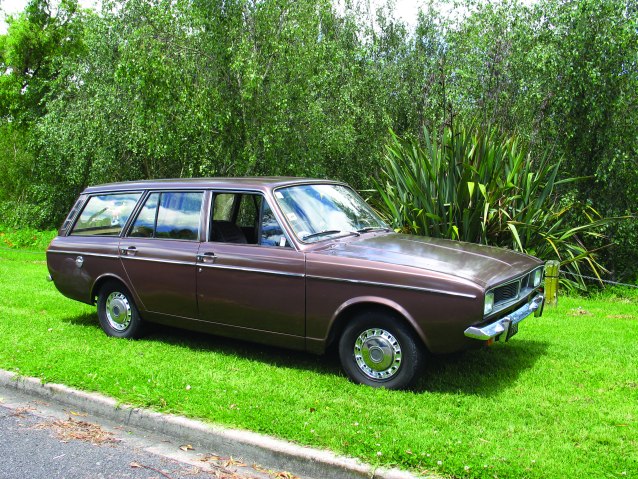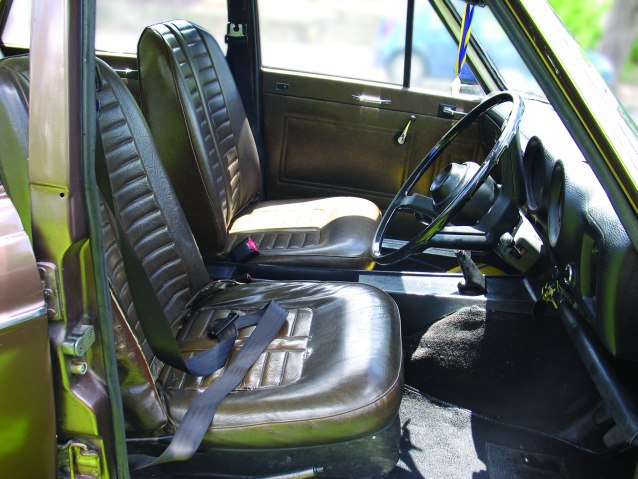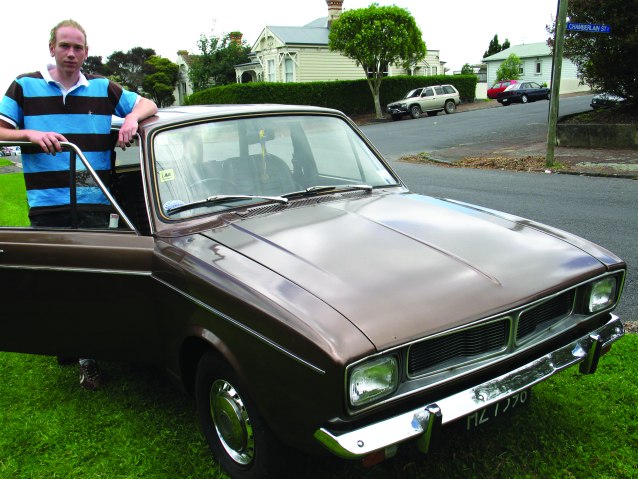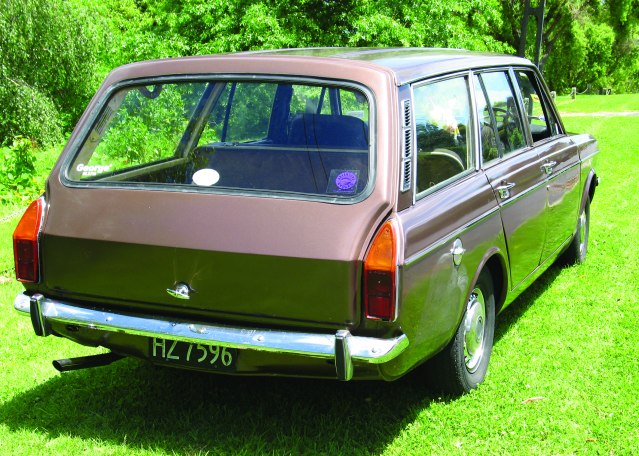data-animation-override>
“Published in New Zealand Classic Car Issue No. 199”

An ode to Todd Motors — this family has three of the Petone/Porirua-based car assembler’s classics
I spotted this car when my daughter got a quick lift home for a forgotten text book. Jacob McMillan comes from a classic car-loving family in Auckland’s Mt Albert. His dad owns a rare 1947 MkI Humber Supersnipe, his mum drives a 1966 Hillman Super Minx, and Jacob and his dad often strip cars with other Humber-Hillman car club members, storing the parts for future use. There’s a family Valiant Charger stowed away somewhere, too. All these cars were handled, if not assembled, by the NZ motoring institution of Todd Motors.
When Jacob got his license he went looking for a commuter car. He checked out a few Fords and other vehicles. Most of his peers would have been looking exclusively for Japanese vehicles, but Jacob wanted something useful, drivable — and a bit different. Nothing really fi tted the bill until he laid eyes on this tidy Hillman.
The car was put together in a car assembly plant owned by the Todd family which was, by then, also assembling Chrysler Valiants and Mitsubishis. Hillman Hunters were assembled locally from 1967, and this model, the AL, was the fi rst with the wood-fi nish fascia plate on the dash.
The Todds
Todd Motor Company was formed in Christchurch in 1923 and moved its headquarters to Wellington over 1924-5. In 1925 the Todds were appointed as the NZ distributor for Chrysler. The Todds established the Associated Motorists’ Petrol Company Ltd shipping in oil from Russia in 1933 — the resulting fuel was christened ‘Europa’ to help disguise its Soviet origins.
It went on sale in 1934. With the Depression mostly over Todd Motors announced it would shortly begin actually assembling Rootes vehicles from the UK, along with some of the US Chrysler vehicles it had been importing, in a new plant in Petone, Todd Motor Industries.
The first cars off the line were American Plymouths in 1935, from Chrysler, at the rate of seven per day. In April, Rootes vehicles (Hillman and Humber cars) from England followed.
By October 1937 the Petone plant had produced 7000 vehicles (including commercials), and the plant was now also building
Hillman 14s and Humber 20s. Todd Motor Industries had added a second assembly line in 1936 for Hillmans and Humbers; the original line was then used just for Chryslers and Commer (Rootes) trucks. Of course, the next big event was World War Two (1939).
From July 1, 1940, the NZ government withdrew all licenses to import vehicles. The Todds had already, in anticipation, dismantled the second line installed in 1936. All outstanding ‘completely knocked down’ (CKD) car packs awaiting assembly were stored while the plant workforce concentrated on munitions, long range aircraft fuel tanks, rifle grenade dischargers, mortar bombs, wooden aeroplane propellers and other equipment, as well as taking part in the damaged American vehicle rebuilding programme.
The war over, Todd Motor Industries brought its passenger car body jigs out of storage and set them up. Humber Super Snipes
arrived in 1952 — the classy cars were well respected. By the 1960s, due to public perceptions and a NZ government keen to
help Mother England emerge from its wartime privations (America hadn’t had its factories bombed), the balance of favour had swung
quite dramatically to English cars — Todd assembled just 135 US Chryslers in 1960, compared to 3928 Hillmans and Humbers.
Todd assembled its 100,000th car in 1964. (The answer to the Chrysler conundrum was solved in 1963 when the Australian-sourced Chrysler Valiant entered production at the Todd plant.) Meanwhile Singers were being put together alongside the Hillmans. In the late ’60s, Japanese cars were creeping into the NZ automotive mix — 1970 car sales by market share put British Leyland Corporation New Zealand (Austin, Standard, Rover and Morris) at 25.01 per cent, Ford 22.15 per cent, General Motors 21.25 per cent and Todd Motors at 16.66 per cent of total NZ car sales.
European and other cars came to 8.6 per cent and Japanese cars just 6.22 per cent. This would all change with the oil shocks,
which dramatically affected sales of big cars and gave the Japanese marques the advantage (good fuel economy) needed — reliability did the rest for the troubled English brands, suffering from aged factories and labour strife in the UK. Todd
acquired its Mitsubishi franchise in 1971.
In 1973, the 200,000th Todd car was built at Petone — it was a Hillman Hunter station wagon much like this one. Director of operations and marketing, Denford McDonald, presented the milestone car to the Otago Old People’s Welfare Council.
Last of lines
In 1975, the last vehicle was assembled at the Todd plant in Petone and the entire operation was moved to the brand new, purpose- built Todd Park in Porirua. Production began on October 29, 1975, without a day’s output being missed (the first Porirua-built cars were Australian Chrysler Valiant utes).
IN 1973, THE 200,000TH TODD CAR WAS BUILT AT PETONE — IT WAS A HILLMAN HUNTER
So back to Jacob — it’s possible his estate was built at Petone, but it’s hard to tell — originally a cream colour, it was resprayed metallic bronze long before he acquired it, and ID tags or stickers went awol some time ago (date first registered would clear this up).
Whatever the case, it’s from near the end of the venerable Hillman line, with the very last being assembled here in 1978.
This wagon (I mean ‘estate’) is defi nitely locally assembled — the glass is all Pilkingtons NZ safety spec. From 1978, Todd assembled just Mitsubishis, a few more Valiants plus some Datsuns and Renaults on contract to other companies. Eventually the Todds sold out the entire business to Mitsubishi Motors NZ, and from then on it was a 100 per cent Mitsubishi builder.
Jacob’s Estate
This car has had a respray, and Jacob thinks at least two motor changes. He’s had it for a year and replaced the differential — the motor is still the original type, a 1724cc four-cylinder ohv engine mated to a four-speed gearbox. Jacob’s not the least bit fazed by any of this — he was a little late for our appointment, having been delayed by a bit of spot-welding on the wagon’s floor-pan. So the polite 18-year-old is already pretty competent, and indeed works as a bike technician outside of school.
The estate version of this popular Hillman series was first assembled here in 1969 — in 1977, the model was face-lifted with
twin headlights for its last incarnation.
Jacob really likes his Hillman. “It’s wonderful,” he enthuses. “I’ll keep it forever. It’s up for anything and it’s versatile.” He imagines
one day he’ll give it the full resto. For now he intends to keep it going, keep it serviced and keep it tidy. He’s found a rare overdrive
he plans on fitting to get a bit more cruisability on the open road — the diff is a bit low-ratio, making it great for hills, but not so
good for long straights, although fuel economy is “fine”.
A lumpy cam is destined for the engine, along with a lightened flywheel. Jacob also plans a port and polish and has twin Strombergs he wishes to fi t, to replace the single Stromberg carburettor. This will give the motor a bit more power, and the
car a little more utility, without turning it into a monster. The Hillman has been to Havelock North (near Napier) and back no worries, and done a few trips as far as Taupo and back. “It gets around.”
Jacob also likes the fact it’s a talking point. People amble over and start conversations, often along the lines of ‘I had one of these’ or ‘I always wanted one of these’. It was a pleasure meeting someone so young and motivated — and with the skills needed, too — to keep a workaday classic like this on the road.
Specs
1976 HILLMAN HUNTER AL ESTATE
Engine: Four-cylinder, 1724cc, overhead valve
Transmissio
n: four-speed manual
Price New: 6298 (estate)
-
$5850 (sedan with manual transmission)
-
$6395 (sedan with auto transmission)
Words & Photos Mark Webster









